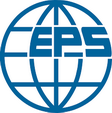Structural and sorption properties of nanoporous carbon materials obtained from walnut shells
DOI:
https://doi.org/10.15330/pcss.24.2.348-353Keywords:
nanoporous carbon material, thermochemical activation, specific surface area, pore size distribution, specific electrical conductivityAbstract
Using the method of low-temperature nitrogen adsorption/desorption, the porous structure of nanoporous carbon materials obtained by alkaline activation of light industry waste (walnut shells) with subsequent thermal modification was investigated. The optimal relationship between temperature and modification time has been established. It is shown that an increase in the modification temperature reduces the transition time of micropores into mesopores and leads to a decrease in the specific surface area and total pore volume. Thus, the material obtained at a modification temperature of 400 ºC and a holding time of 120 min is characterized by the maximum specific surface area of 940 m2/g. It has been investigated that an increase in the time of temperature modification leads to an increase in specific electrical conductivity.
References
P. Karmanova, A. P. Voznyakovsky, L. S. Kochevac, N. G. Rachkovaa, N.I. Bogdanovich, Sorption properties of carbonized biopolymers of plant origin panel, Carbon Resources Conversion, 6(1), 34 (2023); https://doi.org/10.1016/j.crcon.2022.10.004.
M. Zgrzebnicki, A. Kałamaga, R. Wrobel, Sorption and Textural Properties of Activated Carbon Derived from Charred Beech Wood, Molecules, 26(24), 7604 (2021); https://doi.org/10.3390/molecules26247604.
T.Y. Boychuk, I.M. Budzulyak, N.Y. Ivanichok, R.P. Lisovskiy, B.I. Rachiy, Electrochemical properties of hybrid supercapacitors formed from nanosized spinel LiMn1.5Fe0.5O4, Journal of Nano- and Electronic Physics, 7 (1), 01019 (2015).
S. Mandal, J. Hu, S.-Q. Shi, A comprehensive review of hybrid supercapacitor from transition metal and industrial crop based activated carbon for energy storage applications, Materials Today Communications, 34, 105207 (2023); https://doi.org/10.1016/j.mtcomm.2022.105207.
X. Ye, Q. Fana, L. Shang, F. Ye, Adsorptive carbon-based materials for biomedical applications, Engineered Regeneration, 3(4), 352 (2022); https://doi.org/10.1016/j.engreg.2022.08.001.
J. Suresh Babu, Bhavani Naga Prasanna, Satish Babu, Yamarthi Narasimha Rao, and Surafel Mustefa Beyan, Environmental Applications of Sorbents, High-Flux Membranes of Carbon-Based Nanomaterials, Adsorption Science & Technology, 2022, Article ID 8218476, 13 pages https://doi.org/10.1155/2022/8218476.
B. I. Rachiy, B. K. Ostafiychuk, I. M. Budzulyak, N. Y. Ivanichok, Specific energy characteristics of nanoporous carbon activated by orthophosphoric acid, Journal of Nano- and Electronic Physics, 7(4), 04077 (2015).
Yu. Starchuk, N. Ivanichok, I. Budzulyak, S.-V. Sklepova, O. Popovych, P. Kolkovskyi, B. Rachiy, Electrochemical properties of nanoporous carbon material subjected to multiple chemical activation, Fullerenes Nanotubes and Carbon, Nanostructures, 30(9), 936 (2022), https://doi.org/10.1080/1536383X.2022.2043285.
I.F. Myronyuk, V.I. Mandzyuk, V.M. Sachko, R.P. Lisovsky, B.I. Rachiy, Morphological and electrochemical properties of the lactose-derived carbon electrode materials, Journal of Nano- and Electronic Physics, 8 (4), 04006 (2016), https://doi.org/10.21272/jnep.8(4(1)).04006.
M. A. HouriehI, M. N. Alaya, M. Youssef and F. El-SejariahI, Analysis of Nitrogen Sorption Data of Chemically Activated Carbon by the Application of Adsorption Models Based on Surface Coverage and Volume Filling of Micropores, Adsorption Science & Technology, 17(8), 675 (1999); https://journals.sagepub.com/doi/pdf/10.1177/026361749901700806.
B. K. Ostafiychuk N. Ya. Ivanichok, S.-V. S. Sklepova, O. M. Ivanichok V. O. Kotsyubynsky, P. I. Kolkovskyy, I. M. Budzulyak, R. P. Lisovskiy, Influence of plant biomass activation conditions on the structure and electrochemical properties of nanoporous carbon material, Materials Today: Proceedings, 62, 5712 (2022); https://doi.org/10.1016/j.matpr.2022.01.486.
V. I. Mandzyuk, N. I. Nagirna, R. P. Lisovskyy, Morphology and Electrochemical Properties of Thermal Modified Nanoporous Carbon as Electrode of Lithium Power Sources, Journal of Nano- and Electronic Physics, 6(1), 01017 (2014).
M. Thommes, K. Kaneko, A.V. Neimark, J.P. Olivier, R. Francisco, J. Rouquerol, K.S.W. Sing, Physisorption of gases, with special reference to the evaluation of surface area and pore size distribution (IUPAC Technical Report), Pure and Applied Chemistry 87(9-10), 1051 (2015); https://doi.org/10.1515/pac-2014-1117.
S. Brunauer, P.H. Emmett, E. Teller, Adsorption of Gases in Multimolecular Layers, Journal of the American Chemical Society, 60(2), 309 (1938); https://doi.org/10.1021/ja01269a023.
E.P. Barret, L.C. Joyner, P.P. Halenda, The Determination of Pore Volume and Area Distributions in Porous Substances. I. Computations from Nitrogen Isotherms, Journal of the American Chemical Society, 73(1), 373 (1951); http://dx.doi.org/10.1021/ja01145a126.
P. I. Ravikovitch A. V. Neimark, Density functional theory model of adsorption on amorphous and microporous silica materials, Langmuir, 22, 11171 (2006); https://doi.org/10.1021/la0616146.









